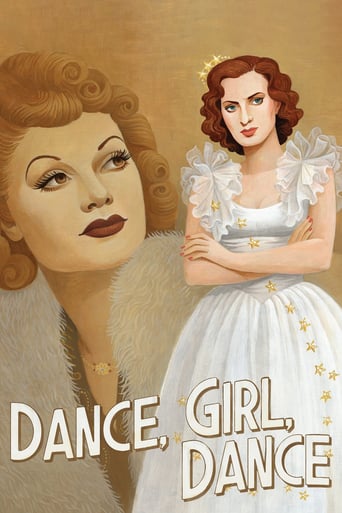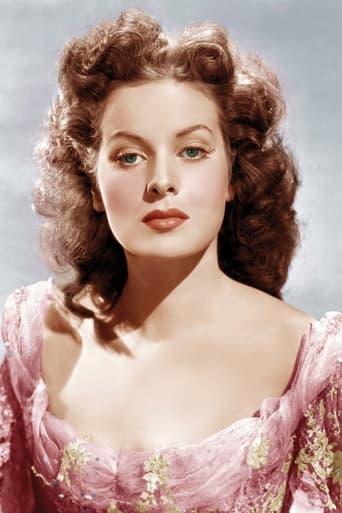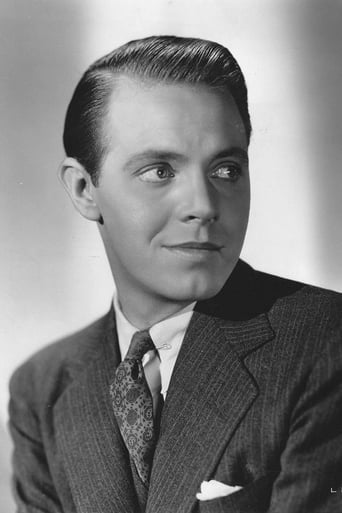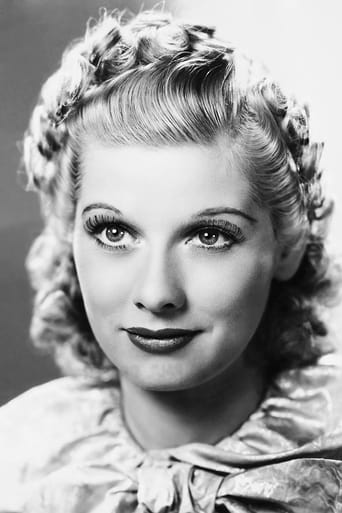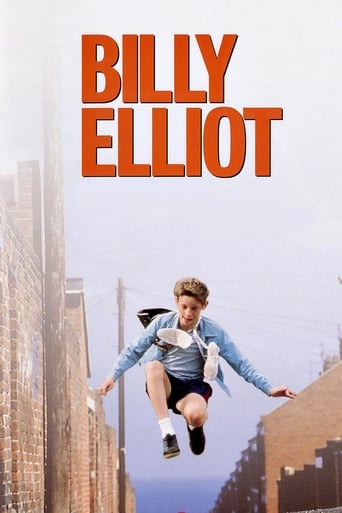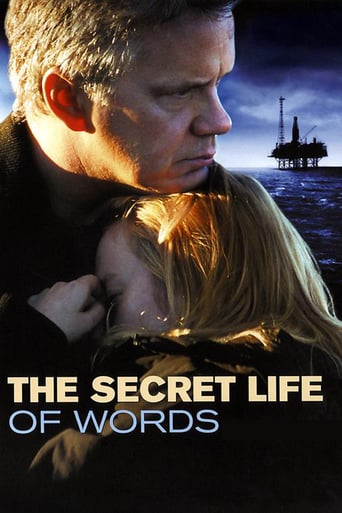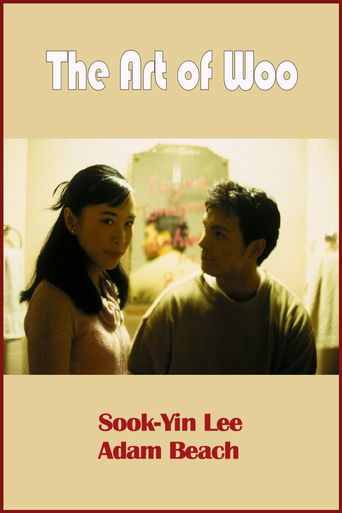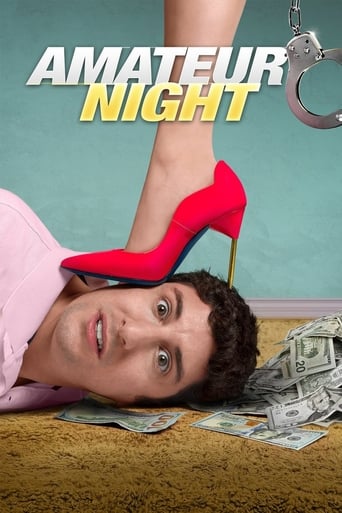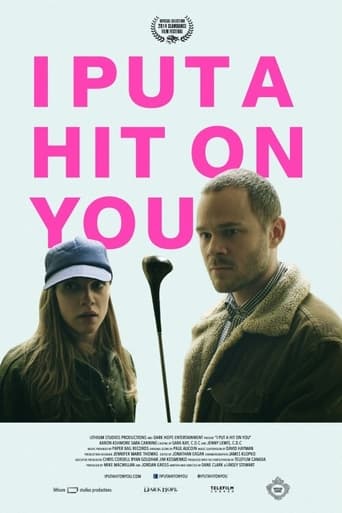Dance, Girl, Dance (1940)
Judy O'Brien is an aspiring ballerina in a dance troupe. Also in the company is Bubbles, a brash mantrap who leaves the struggling troupe for a career in burlesque. When the company disbands, Bubbles gives Judy a thankless job as her stooge. The two eventually clash when both fall for the same man.
Watch Trailer
Cast


Similar titles
Reviews
Dance Girl Dance tells the story of two redheaded dancers in their salad days. One is Lucille Ball who makes it to the top in burlesque. The other is Maureen O'Hara who has the ambitions and the talent, but not the drive to succeed in classical ballet. She acts as a stooge/foil for Lucy's burlesque act and takes the money as well as the audience jibes that come with it.Both of them pique the interest of Louis Hayward a soon to be divorced playboy from Virginia Field. In addition even though O'Hara chickened out of the audition, ballet company head Ralph Bellamy thinks she has that something which will make her succeed in ballet.All these lives are tangled up with each other, but the focus is on the rivalry between Lucy and Maureen. It's friendly at times and not so friendly at others. It gets real nasty when the two have a knock down drag out brawl on stage. The customers at the burlesque sure got their money's worth that night, all these two needed was a pit of mud.In her memoirs Maureen O'Hara had nothing but kind words to say for Lucille Ball whom she got to be great friends with. She also said that by dint of her training as a Goldwyn Girl, Lucy had quite a head start on her in the dance department. O'Hara recalled the shoot as exhausting but she was proud of the finished product. As well she should have been.Lucy also met her leading man from her next scheduled picture Too Many Girls and fell in love with him. That would be Desi Arnaz and we all know where that romance went.O'Hara also enjoyed working for Dorothy Arzner and felt that Arzner brought a special dimension to what is a 'woman's picture' since it's about the friendship between two women. In any event Dance Girl Dance is a work anyone associated with it can be proud of.
Aspiring dancers try to make it big in New York City. This is a forgettable movie that can't decide if it wants to be a comedy, a drama, or a musical when it grows up. A good cast is wasted. Ball is the main attraction here, energetically singing and shaking her groove thing as a dancer named Bubbles. O'Hara, playing Miss Goody Two-Shoes, isn't given much to do, but handles herself well. Hayward is underwhelming as a ladies' man. Bellamy fares better as a decent fellow who's smitten with O'Hara. Arzner, while historically important as a female director in Hollywood, fails to make this interesting. Despite the cast, it feels like a B movie.
Dance, Girl, Dance, which sounds like a Joan Crawford movie, is not. It features superb dance sequences which exemplify the superior ballet technique and style of the '40s. Vivian Fay is outstanding. Lucille Ball is hot, girl, hot! Who knew our Lucy could be a burlesque queen and skillful dancer, not to mention Maureen O'Hara dancing her socks off with fine ballet technique. I don't think they used a dance double, or did they? I hope not. But who is this choreographer, hitherto unknown? What became of him? He did an excellent pastiche of Leonid Massine's ballets. Why do we have to write so many lines? Don't they know that pithy comments can say so much more? I think the movie dragged as it got soapy, but the emotion was convincing, and I could personally relate to the story of the ballet teacher very much. I had one just like her.
Is it unfair to judge a film by the gender politics suggested by its director? I walked into a screening of this film tonight (free at a library branch) knowing only that it starred Maureen O'Hara and was directed by Dorothy Arzner. Yet it seems impossible to react to the the film without factoring in the subtle yet remarkable effect on its content that Arzner's participation represents.Though thoroughly in a B-movie mold (back projections and modest decor abound), the film has a distinctively assured "feel" and personality, seems photographed intimately and with distinction and even boasts one ambitious "modern ballet" production number that must have borrowed one of those RKO Fred Astaire soundstages for a few days.Grittily rather than luminously shot, Maureen O'Hara still manages to look astonishingly lovely throughout, whether in occasional soft-focus moments or in dramatic shots and contexts. Lucille Ball comes off extremely well in a relentlessly "bad girl" role, though while some claim she steals the picture, I wouldn't agree. Bellamy and Hayward are effective, though clearly subsidiary in importance and focus.The whole proceeding seems to unfold metaphorically, almost like a fable, as though no one really expects us to find it believable for a minute. No-one behaves realistically, yet neither is it a farce. Nor is it a conventional "romance," since Judy (O'Hara) ends up transcending the whole issue of love "saving" her; when she is seen embracing Steve at film's end, it can be easily seen as an expression of relief or exhaustion after all the preceding duress, of accepting the new professional direction in her life rather than in any way being "saved" by anyone but herself, despite a brief unconvincing flurry of conventional "you listen to ME now" dialogue from Ralph Bellamy that Judy doesn't seem to be heeding anyway.In fact, Judy walks a refreshingly hybrid line between enlightened self-determination, pluck, and competence tempered by a gentler, luminous femininity. Every character of any real dignity or depth or dramatic power is female, and the male characters are truly secondary in their dimensionality.Judy's old Russian dance mentor Basilova (representing another weird parallel to FLASHDANCE, wherein a real-life Alexandra Danilova played the old Russian dance mentor to Jennifer Beals) is a striking catalyst in this context, rendered initially as very masculine by starkly drawn-back hair and male clothing (she's always seen in a suit and tie). We could easily be unsure of her gender in her first scene (on the phone) though gradually and knowingly she is "softened" by Arzner (we see the severity of the hair is a result of her dancer's "bun", she gradually morphs to a more maternal role after her initial mercenary businesslike impression, etc.).Judy has the upper hand, ultimately, in every situation. Wonderful moments include the scene where she confronts a brusque audience in a burlesque theater, her cogent assessment of the nature of Jimmy's heart in a warmly realized courtroom scene, and yes, even that famous catfight with Ms. Ball. Many scenes require O'Hara to react in ways where certain complex emotions need to be communicated wordlessly. She does not fail us, in reaction shots throughout the picture to injustices, frustrations, assessments of people's true personalities, her indignance and misunderstanding of Steve's motives, "awe" at the ballet company and even her association of a kind of idealised love with the little "Ferdinand" stuffed bull (one of two unabashed examples of RKO's nearly exploitatitive relationship to Disney at the time).Yet the "Ferdinand" subplot is handled with real aplomb by both writers and director. Judy associates the little bull (clearly a masculine image) with a kind of idealized love, and while it ulimately isn't a love in which she participates, her instinctive take on it proves authentic as an image which connects two other characters.Another recurring image is starlight: Judy dreams of a ballet about a star, then when she visits "Club Ferdinand" with Jimmy, a singer sings of starlight (in a song by Wright & Forrest). At the close of that evening, she wishes upon a star in one of the film's more romanticized views of New York City.Ultimately though, this film is more "about" the disparity between art and commerce than it is about love. Ball's "Bubbles" character is a financial success while Judy's ballet dancing is maligned completely. An issue that remains unresolved in our own cultural lives, over 60 years later, "Art" still lumbers along, clumsily out of the mainstream, ignored by a public which embraces well-crafted junk and rewards the less challenging with higher ratings and plenty of dough.And yet Steve's "populist ballet" number is nothing to write home about. Then, as now, the dilemna still exists when so much "art" seems more pretentious and less well-crafted than a good vaudeville act. It's goal is higher, but it can be irrelevant to a public clamoring for ready-made fun.However all this plays out as aesthetic philosophy, Ms. Arzner has achieved a unique and decidedly pro-woman tour-de-force within this little forgotten RKO classic. While closer in spirit of imagery to STAGE DOOR than any other film that I can think of, it creates its own small symbolic world full of not-quite-real characters telling a fable-like structure. And although at some point, someone in the film (I can't remember now who!) says "I don't believe in fairy tales!" -- that's exactly what this film is, in its accomplished, proto-feminist way. Judy is our Sleeping Beauty or Snow White, but triumphs not through being "saved by a man" but by her own integrity, adherence to a dream and inner strength of conviction and values.That alone makes this oddly compelling little film well worth seeing.

